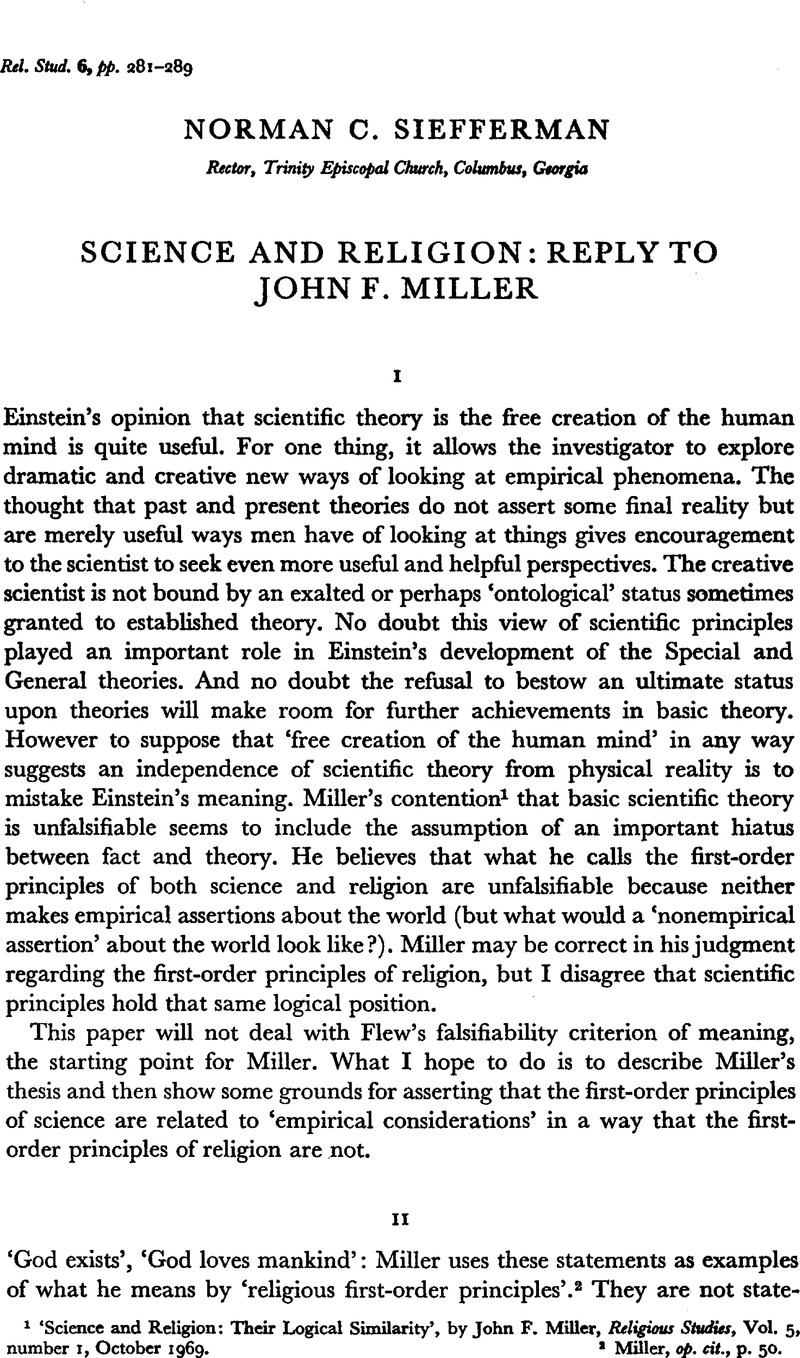Published online by Cambridge University Press: 24 October 2008

page 281 note 1 ‘Science and Religion: Their Logical Similarity’, by Miller, John F., Religious Studies, Vol. 5, number I, October 1969.CrossRefGoogle Scholar
page 281 note 2 Miller, , op. cit., p. 50.Google Scholar
page 282 note 1 This does not include such conditions as, e.g. psychological shock; for instance, when some personal tragedy prompts one to abandon religious beliefs.
page 282 note 2 Miller, , op. cit., p. 50.Google Scholar
page 282 note 3 Miller, , Op. cit., p. 51 f., the italics are Miller's.Google Scholar
page 282 note 4 Miller, , op. cit., p. 52.Google Scholar
page 283 note 1 Miller, , op. cit., p. 52 n.Google Scholar
page 283 note 2 ‘Correct’ in physical theory usually means such things as the ability of the theory to predict future empirical events, correlate present events, etc.
page 283 note 3 Nagel, Ernest, The Structure of Science; Harcourt, Brace and World, Inc., New York, 1961, pp. 65–6.Google Scholar
page 283 note 4 Miller, , op. cit., p. 53, the italics are Miller's.Google Scholar
page 284 note 1 For a simplified account of the neutrino, see Guillemin's, VictorThe Story of Quantum Mechanics, Charles Scribner's Sons, Inc., New York, 1968, p. 142.Google Scholar
page 284 note 2 ‘As they are now used’, because it is probable that once such principles could be falsified, e.g. the contest between Elijah and the prophets of Baal in I Kings 18.
page 284 note 3 See Holton, and Roller, , Foundations of Modern Physical Science, Addison-Wesley, Reading, Mass. 1965, chapters 16–20.Google Scholar
page 285 note 1 Whatever is correct about this discussion is due to Karl, Popper'sConjectures and Refutations: The Growth of Scientific Knowledge, Harper and Row, New York, 1963.Google Scholar
page 285 note 2 Guillemin, , Op. cit., p. 259, italics mine.Google Scholar
page 286 note 1 Miller, , Op. cit., p. 64.Google Scholar
page 287 note 1 Miller, , op. cit., p. 51.Google Scholar